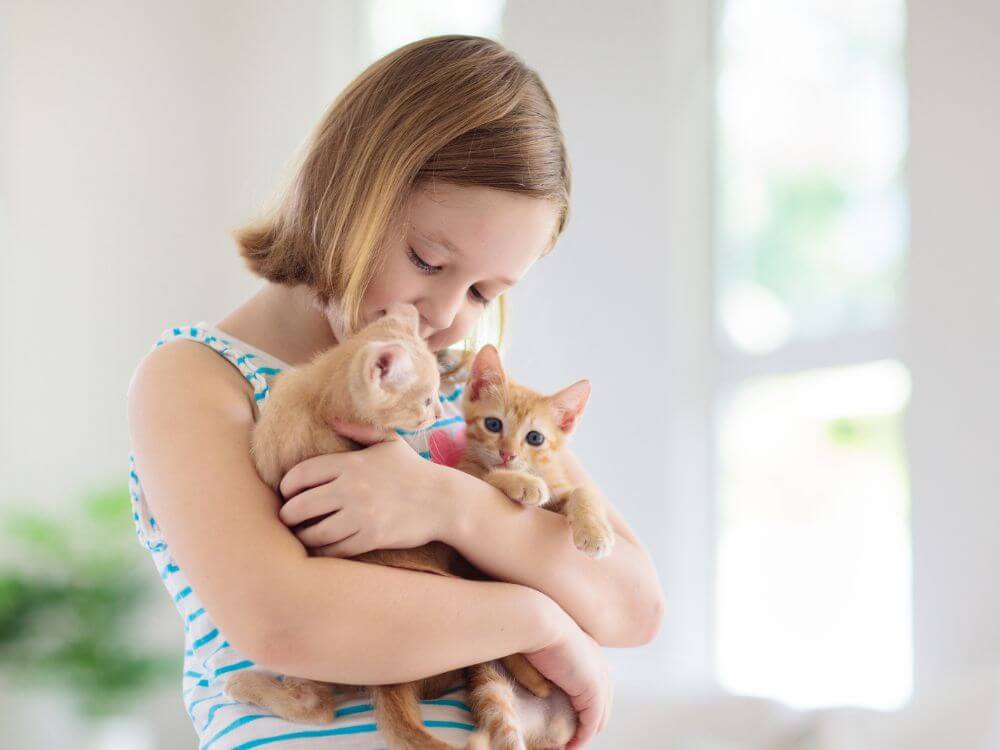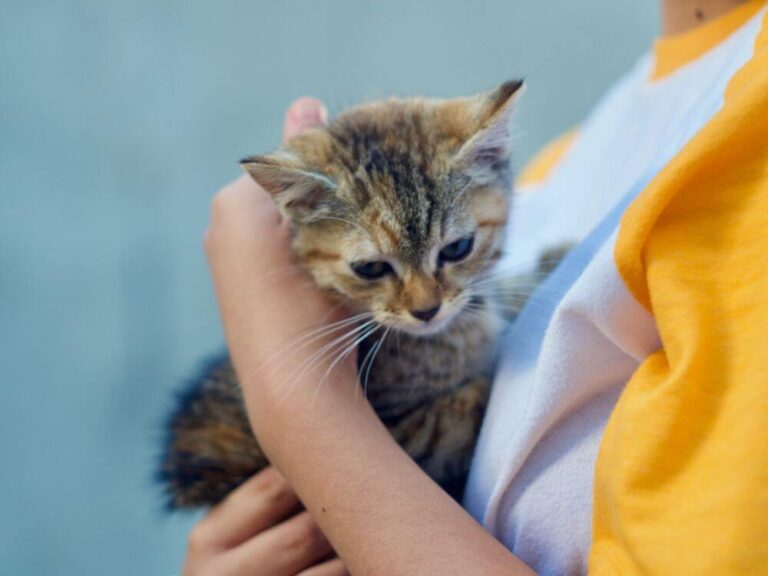Preparing Your Children for a New Cat

Bringing a new pet into your home is a joyful yet challenging experience, especially when children are involved. Cats are fascinating creatures, and their independent nature makes them wonderful companions. However, it’s essential to properly prepare both your cat and your children to ensure a smooth transition. This article will guide you through important steps to ensure harmony between your children and your new feline family member.
Understanding the Nature of Cats
Cats, unlike dogs, have a more independent personality. They often appreciate quiet spaces and personal time. Understanding this aspect of their nature is crucial, especially when preparing your children for the new addition. Kids may expect cats to be overly affectionate or playful all the time, which isn’t always the case.
Key Points:
- Cats need personal space to feel safe.
- They show affection in more subtle ways, like purring or gentle nuzzling.
- Some cats prefer limited interaction, especially when they’re adapting to a new environment.
Preparing Your Children for a Cat
Before your new cat arrives, it’s essential to educate your children about how to interact with it. This will set expectations and minimize potential stress on both sides.
Teach Gentle Handling
Children must understand the importance of being gentle with a cat. Explain that sudden movements, rough handling, or loud noises can frighten the cat. Encourage slow, calm gestures when approaching the cat for the first time.
Set Boundaries
It’s crucial to establish boundaries for your children and the cat. Create specific “safe zones” for your cat where it can retreat when it feels overwhelmed. This may be a particular room, a cat bed, or a high perch. Teach your children to respect these boundaries and not to disturb the cat when it’s in its safe zone.
Encourage Patience
Cats take time to trust new people, especially young children who might be more unpredictable. Emphasize patience when building a relationship with the new pet. Explain to your kids that trust will develop over time through consistent kindness and gentle interactions.
Choosing the Right Cat for Your Family
Not all cat breeds are equally suited for homes with young children. Some breeds are more tolerant of rougher handling and high energy, while others may become stressed in a busy household.
Family-Friendly Breeds
Breeds such as Ragdolls, Maine Coons, and Burmese are known for their gentle temperaments and adaptability to family life. These cats tend to enjoy human interaction and can tolerate children’s more active playstyles.
Cats to Consider if You Have Toddlers
If you have very young children, consider adopting an adult cat. Kittens, while adorable, require more training and patience. Adult cats are typically more independent and may be better suited to households with small children.
The First Meeting: Introducing Cat and Child
The first meeting between your new cat and your children can set the tone for their future relationship. It’s essential to manage this introduction carefully to avoid overwhelming your new pet.
Keep It Calm
Start with a calm environment. Ensure there are no loud noises or excessive excitement in the house. Allow the cat to explore its new surroundings before bringing the children in to meet it.
Supervise Interactions
Always supervise the initial interactions between your children and the cat. Remind your kids to speak softly and avoid sudden movements. Let the cat approach them when it feels comfortable, instead of forcing physical interaction.
Use Positive Reinforcement
Reward both your cat and your children for calm, positive behavior during their initial meeting. Praise your kids for being gentle and give your cat treats or petting when it interacts positively.
Creating a Cat-Friendly Home
To ensure your cat feels safe and comfortable in your home, it’s important to create an environment that caters to its needs.
Provide Scratching Posts
Cats naturally scratch surfaces to mark their territory and stretch their muscles. Providing scratching posts can help prevent damage to your furniture while allowing your cat to engage in natural behaviors. Involve your children by teaching them to guide the cat towards the post rather than the furniture.
Offer a Quiet Space
A busy household can overwhelm a cat, especially if young children are running around. Ensure your new feline has a designated quiet space to retreat to when it feels stressed. This can be a room, corner, or high perch where the cat can observe from a distance.
Teaching Kids About Cat Care
Involving children in your cat’s care can help them bond with the pet and learn responsibility. Assigning age-appropriate tasks will foster a sense of ownership and empathy in your children.
Feeding
Older children can help feed the cat, ensuring it gets the right amount of food at the right times. Explain the importance of a proper diet, and let your kids help by measuring portions.
Grooming
While grooming is often a bonding activity, some cats may not enjoy being brushed or bathed. If your cat is tolerant of grooming, involve your children in brushing sessions, teaching them to be gentle and patient.
Litter Box Maintenance
For older children, cleaning the litter box can be a helpful chore. Explain the importance of hygiene and how keeping the litter box clean will make the cat happier and healthier.
Addressing Challenges: Cats and Children
Despite your best efforts, challenges may arise. Whether it’s a child wanting more attention from the cat or the cat reacting to too much stimulation, it’s essential to handle such situations with care.
Overenthusiastic Kids
Children, especially younger ones, may overwhelm the cat with their enthusiasm. Encourage your kids to understand the signs when the cat has had enough interaction, such as tail flicking or moving away. Reinforce the idea that sometimes the cat needs space and that’s okay.
Shy or Nervous Cats
If your cat is shy or nervous around children, give it time. Patience is key. Ensure the cat has plenty of safe spaces and doesn’t feel pressured to interact. Over time, with a calm environment and gentle handling, trust will develop.
Conclusion: Building a Lasting Bond
Introducing a new cat into a household with children requires careful preparation and patience. However, with the right approach, your children and your cat can form a lasting bond built on trust and respect. By teaching your children how to interact with their new furry friend, creating a safe and comfortable environment, and addressing challenges with empathy, you’ll ensure a positive experience for both the cat and your family.
In the end, having a cat can be an enriching experience for children, teaching them responsibility, compassion, and the joys of caring for another living being. Through patience and proper preparation, your family and your new cat can thrive together.





